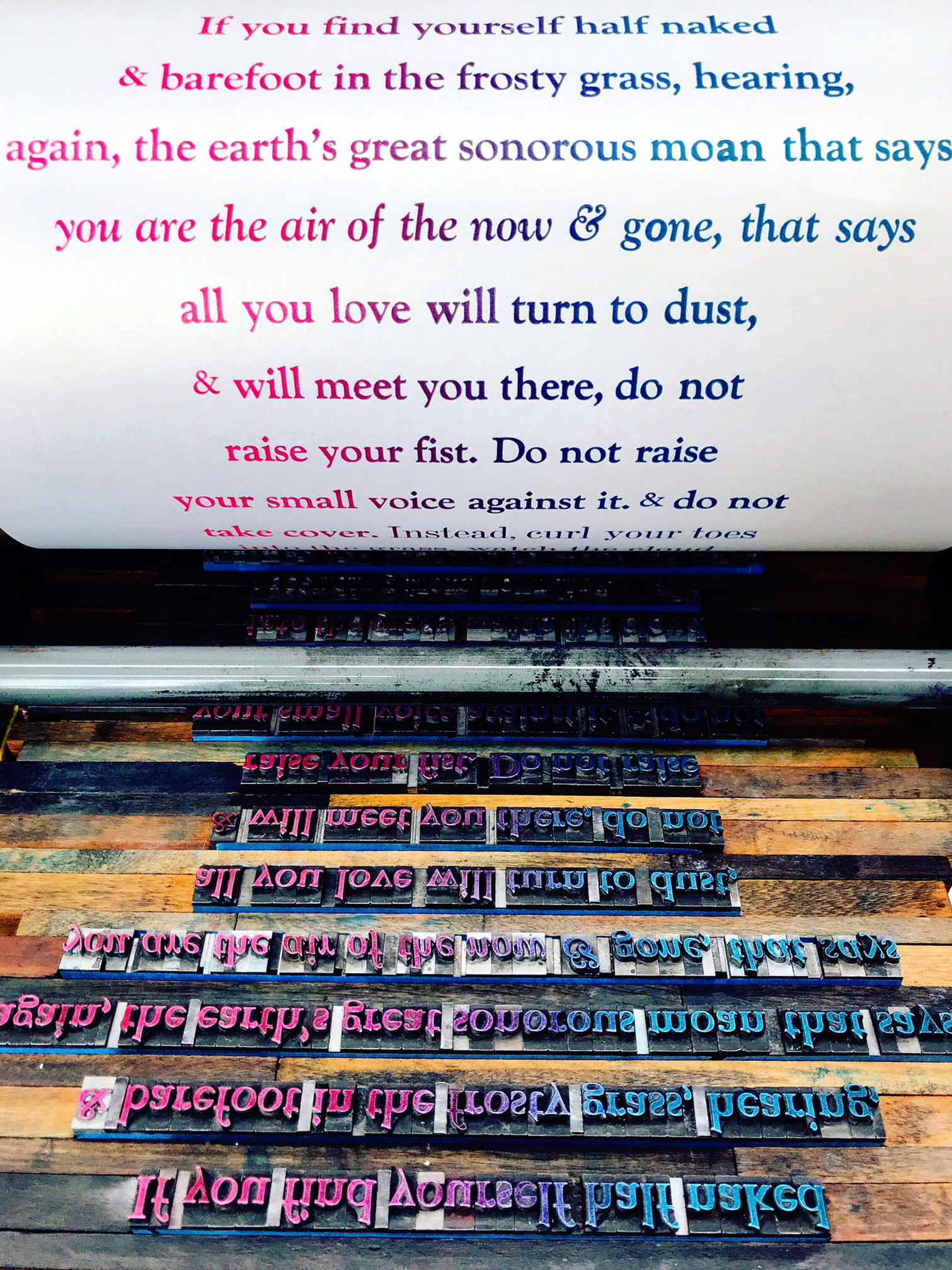“Unsent Message to My Brother in His Pain” a poem by Leon Stokesbury
Please do not die now. Listen.
Yesterday, storm clouds rolled
out of the west like thick muscles.
Lightning bloomed. Such a sideshow
of colors. You should have seen it.
A woman watched with me, then we slept.
Then, when I woke first, I saw
in her face that rest is possible.
The sky, it suddenly seems
important to tell you, the sky
was pink as a shell. Listen
to me. People orbit the moon now.
They must look like flies around
Fatty Arbuckle’s head, that new
and that strange. My fellow American,
I bought a French cookbook. In it
are hundred and hundreds of recipes.
If you come to see me, I shit you not,
we will cook with wine. Listen
to me. Listen to me, my brother,
please don’t go. Take a later flight,
a later train. Another look around.
[sketchbook] the latitudes of desire
just posted some new work, that's inspired by this poem "The Latitudes of Desire," & lots more. notice how the pages of my copy of Sparks from a Nine Pound Hammer are stained with wine, which show the love I have for this book, which I showed the poet, Steve Scafidi, when I met him at dinner & he signed it at a poetry reading a couple years ago.
& lucky that James Lewis Tucker of The Aesthetic Union & I are in collaboration talks, about the colors & the color blue (& all the other things that stem from that hue), which also inspired the new work & more + is leading up to amazing collaboration action.
more soon, ❤️
breathebreathebreathe [sketchbook notes]
breathebreathebreathe
ONE HUNDRED SONNETS, 1963
Andre’s first poem upon entry into the Words installation, One Hundred Sonnets (1963), consists of 99 pages on to which he typed the same noun repeatedly to fill a rectangular plane, one plane per page, one noun or pronoun per plane (fig. 25). The gridded-square structure of the sonnet is the key visual component of the work, a feature made possible through the use of the fixed-width character setting of the typewriter. Each character occupies approximately the same amount of space, and each sonnet includes a set number of these units, either 392 or 400, depending on the number of letters in each word. Andre set the approximate visual rule for the characters and word units, generating lines of either twenty-eight or thirty characters, also depending on the number of letters in each word. Andre begins One Hundred Sonnets by repeating the self-referential pronoun “I” thirty times across the first page. A few sonnets later he repeats the four-letter word “head” seven times to produce a line that is twenty-eight characters long, and so on. Andre arranged each sonnet into six sections unified by kind. He begins with the pronouns, I, you, he, she, it, and moves successively to body part, fluids, numbers, minerals, colors, and terrestrial and planetary phenomena and subjects. The arrangement in the cases creates surprising juxtapositions between these various categories. For example, due to the placement, two rows of ten sonnets in each case, we have combinations such as the following:
There are numerous possible readings in this simple combination. There is the initial shock of reading tides aligned with the sun, rather than the moon, in a combination where the word sun defines a particular subcategory of tide. Or, we can think of the two words as equivalent, “sun tide.” Incomprehensible at first, we may also remember the wave-particle duality of light in which case we imagine the sun issuing, metaphorically, a constant tide of light. Or, perhaps we simply think, nominally, of sun light illuminating the tide. Or, we can think of the word tide in its rise and fall, the sun’s tide, as a synonym for the sun’s diurnal activity. But, there is still the pressing question of genre and form. How can we read either of these as a sonnet? Andre’s poem is far from Shakespeare’s “Sonnet 138”:
When my love swears that she is made of truth,
I do believe her, though I know she lies,
That she might think me some untutor’d youth,
Unlearned in the world’s false subtleties.[112]
One Hundred Sonnets lacks most of the formal characteristics of a sonnet: iambic pentameter, a volta, or rigorous attention to syllabic substitution. The standard structure of a Shakespearean sonnet allows for easy navigability. The repetitive force of Andre’s sonnets, in contrast, disorients the reader. Words hide within strings of words. The word “bowel,” for example, appears within “elbowelbowelbow” (fig. 26). Andre generates meaning by forming relationships of words as singular units on a page, in contrast to utilizing habitual syntactic relationships between subjects, verbs, and predicates.
The poem’s orientation of words in space demonstrates the centrality of the visual for reading and meaning-making. The repetition of form suggests an equivalency amongst different words. The grid structure equalizes the word units, generating a non-syntactical equivalence between each word. Andre gestures paratactically toward numerous comparisons without the “like” or “as” construction of the simile. He reserves the connective action for the reader/viewer. Although engaging a paratactic strategy, Andre expands Pound’s technique of juxtaposing dissimilar images in the poem “In a Station of the Metro.” Each repeated word in Andre’s sonnets exists within a paratactic structure with every other word. Moreover, each sonnet relates to every other sonnet paratactically. Describing the sonnets to Frampton, Andre wrote:
In Five Poems, I accomplished a kind of dissociation, an isolation of single words from all the others. In the Sonnets I attempted to generate a form by the repetition of the dissociated elements…You tend to take curves in order to discover values. I take values to obtain curves. Each sonnet of the Sonnetsis the curve obtained by the repetition of an element. I was trying to map a poetry on a plastic, rather than a musical system.[113]
Andre’s repetitive structure does not evacuate meaning, but instead allows for a reevaluation of meaning. Every word has its own value. As Andre generates visual, not syntactic relationships between words, these values shift. If mapped, these shifts create shape, a plastic not a musical quality. One Hundred Sonnets denies the reader the ability to identify meaning or easily paraphrase the content of a poem. Still maintaining a rigorous and highly organized structure, Andre generated new rules for the sonnet while exploring the Constructivist qualities of language in which individual constituent elements, in this case letters and words, combine to form an allover design.





